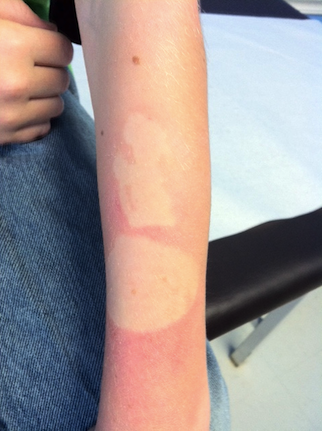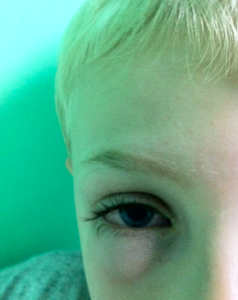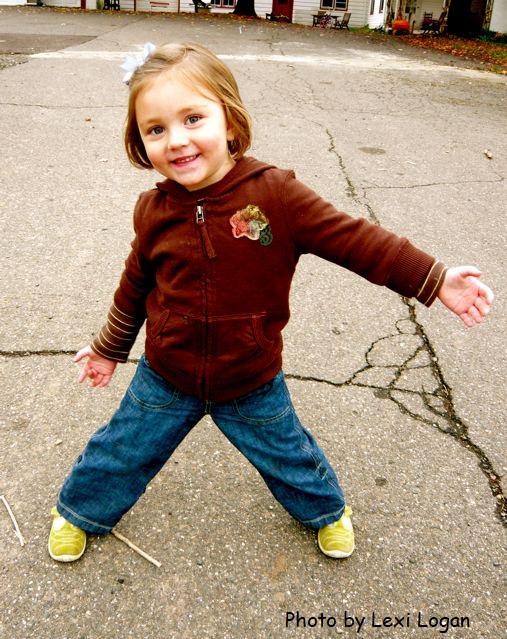 The antihistamine quandry
The antihistamine quandry
Junior’s nose is starting to twitch
His nose and his eyes are starting to itch.
As those boogies flow
You ask oh why, oh why can’t he learn to blow?
It’s nice to finally see the sun
But the influx of pollen is no fun.
Up at night, he’s had no rest,
But which antihistamine is the best?
It’s a riddle with a straight forward answer. The best antihistamine, or “allergy medicine” is the one which works best for your child with the fewest side effects. Overall, I don’t find much of a difference between how well one antihistamine works versus another for my patients. However, I do find a big difference in side effects.
Oral antihistamines differ mostly by how long they last, how well they help the itchiness and their side effect profile. During an allergic reaction, antihistamines block one of the agents responsible for producing swelling and secretions in your child’s body, called histamine.
Prescription antihistamines are not necessarily “stronger.” In fact, at this point there are very few prescription antihistamines. Most of what you see over-the-counter was by prescription only just a few years ago. And unlike some medications, the recommended dosage over-the-counter is the same as what we used to give when we wrote prescriptions for them.
The oldest category, the first generation antihistamines work well at drying up nasal secretions and stopping itchiness but don’t tend to last as long and often make kids very sleepy. Diphendydramine (brand name Benadryl) is the best known medicine in this category. It lasts only about six hours and can make people so tired that it is the main ingredient for many over-the-counter adult sleep aids. Occasionally, kids become “hyper” and are unable to sleep after taking this medicine. Other first generation antihistamines include Brompheniramine (eg. brand names Bromfed and Dimetapp) and Clemastine (eg.brand name Tavist).
The newer second generation antihistamines cause less sedation and are conveniently dosed only once a day. Loratadine (eg. brand name Alavert, Claritin) is biochemically more removed from diphenhydramine from than Cetirizine (eg. brand Zyrtec) and runs a slightly less risk of sleepiness. However, Cetirizine tends to be a better at stopping itchiness.
Now over-the-counter, fexofenadine (eg brand name Allegra) is a third generation antihistamine. Theoretically, because a third generation antihistamine is chemically the farthest removed from a first generation antihistamine, it causes the least amount of sedation. The jury is still out.
If you find your child’s allergies are breaking through oral antihistamines, discuss adding a different category of oral allergy medication, eye drops or nasal sprays with your pediatrician.
Because of decongestant side effects in children, avoid using an antihistamine and decongestant mix.
Back to our antihistamine poem:
Too many choices, some make kids tired,
While some, paradoxically, make them wired.
Maybe while watering flowers with a hose,
Just turn the nozzle onto his runny nose.
Naline Lai, MD with Julie Kardos, MD
©2011 Two Peds in a Pod®


 The antihistamine quandry
The antihistamine quandry  As spring break approaches, here are some ways to handle sickness while traveling with your children when you are far away from your children’s primary care provider.
As spring break approaches, here are some ways to handle sickness while traveling with your children when you are far away from your children’s primary care provider. Recently I had the pleasure of taking a three-year-old neighbor out to dinner. My own kids and I greatly enjoyed our three-year-old friend’s conversation and antics so afterwards I decided to write about three-year-olds.
Recently I had the pleasure of taking a three-year-old neighbor out to dinner. My own kids and I greatly enjoyed our three-year-old friend’s conversation and antics so afterwards I decided to write about three-year-olds.  Remember that funny Sesame Street sketch when Ernie has a banana in his ear and his buddy Bert keeps asking Ernie why he has a banana in his ear? Ernie answers, “I can’t hear you Bert, I have a banana in my ear!” Ernie’s hearing loss was easily remedied by removing the banana. Temporary hearing loss produced by infection and fluid in the middle ear is remedied by removing the infection and fluid. Ear tubes (myringotomy or tympanostomy tubes) inserted into the eardrum will allow clearing.
Remember that funny Sesame Street sketch when Ernie has a banana in his ear and his buddy Bert keeps asking Ernie why he has a banana in his ear? Ernie answers, “I can’t hear you Bert, I have a banana in my ear!” Ernie’s hearing loss was easily remedied by removing the banana. Temporary hearing loss produced by infection and fluid in the middle ear is remedied by removing the infection and fluid. Ear tubes (myringotomy or tympanostomy tubes) inserted into the eardrum will allow clearing. When the first news of the earthquake and subsequent tsunami rolled in from Japan last week, my family started to track down news of my cousin who resides in Tokyo with her husband and two sons. We were relieved to hear of shaken china and toppled bookshelves but no injuries. My nephew was on a school field trip that day and the bus was delayed, but he got home safely the next day. They were physically safe, but mentally shaken.
When the first news of the earthquake and subsequent tsunami rolled in from Japan last week, my family started to track down news of my cousin who resides in Tokyo with her husband and two sons. We were relieved to hear of shaken china and toppled bookshelves but no injuries. My nephew was on a school field trip that day and the bus was delayed, but he got home safely the next day. They were physically safe, but mentally shaken.  In Part 1 of our talk, we presented the problems with pediatric obesity and provided six seemingly simple rules to follow that can help encourage your kids to become or maintain a healthy weight. But why is it so hard to follow these rules? In Parts two and three of our talk, we play out several common scenarios that illustrate our culture of over eating and suggest ways to change this culture.
In Part 1 of our talk, we presented the problems with pediatric obesity and provided six seemingly simple rules to follow that can help encourage your kids to become or maintain a healthy weight. But why is it so hard to follow these rules? In Parts two and three of our talk, we play out several common scenarios that illustrate our culture of over eating and suggest ways to change this culture.